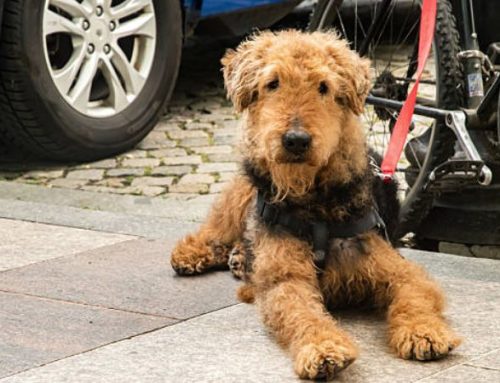Strong, fearless, and deeply loyal, the Alapaha Blue Blood Bulldog is a breed that commands attention the moment it steps into a room—or onto your property. Built to work hard and protect fiercely, yet surprisingly agile for its size, this remarkable bulldog has earned its place as both a devoted family companion and a vigilant guardian.
From its striking appearance to its unwavering temperament, understanding the Alapaha means diving into a world where heritage, heart, and strength come together in a truly unique canine.
Introduction to the Alapaha Blue Blood Bulldog
The Alapaha Blue Blood Bulldog is a rare and powerful bulldog breed originating in the United States, specifically in Georgia. Known for its strength, agility, and loyalty, this breed was developed primarily as a “catch dog” for livestock and as a guardian for plantations. Its lineage traces back to the now-extinct Old English Bulldogs, which were brought to America in the 18th century. These ancestors were initially used for bull and bear baiting in Europe, but over time, they adapted to working on farms and protecting homesteads.
The breed is also recognized by several alternative names and nicknames, including Otto, Cowdog, Alapaha Bulldog, and Silver Dollar Dog. A cornerstone of the breed’s modern development was a dog named Otto, bred by the Lane family of Rebecca, Georgia. Otto and his descendants helped establish the characteristics that define the Alapaha Blue Blood Bulldog today: a muscular, intelligent, and loyal dog capable of both work and protection.
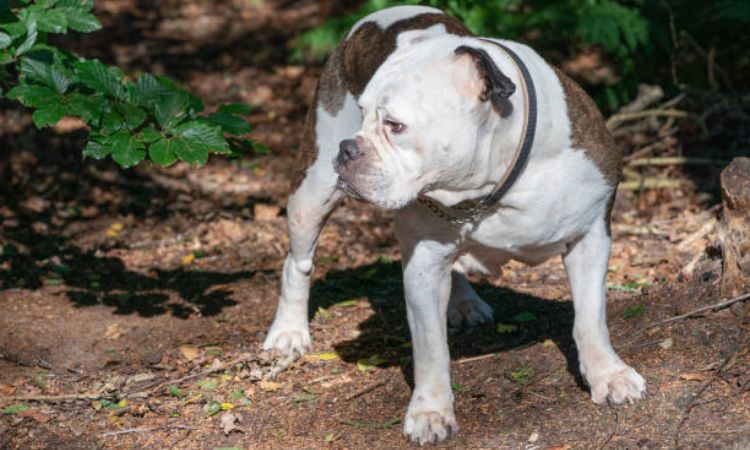
Is the Alapaha Blue Blood Bulldog Right for You?
The Alapaha Blue Blood Bulldog is best suited for experienced dog owners who understand the needs of a high-energy, strong-willed breed. Ideal homes include:
- Active families or individuals who can provide at least 1–2 hours of daily physical and mental exercise.
- Owners seeking a protective working dog capable of guarding property and livestock.
- Homes with ample outdoor space or rural settings where the dog can move freely.
However, this breed may not be suitable for everyone:
- First-time dog owners unfamiliar with training a dominant, intelligent breed.
- Apartment dwellers or those unable to provide sufficient daily activity.
- Households with small pets, such as rabbits or birds, due to the Alapaha’s high prey drive.
When properly trained, socialized, and exercised, the Alapaha Blue Blood Bulldog becomes a devoted companion, a reliable guardian, and a loyal member of the family.
Alapaha Blue Blood Bulldog Size, Weight, and Appearance
Size and Weight
Alapahas are medium to large dogs, with noticeable sexual dimorphism: males are typically much larger and heavier than females.
- Height: 20–25 inches (51–64 cm) at the shoulder
- Weight: 50–90 pounds (23–41 kg), with males often reaching the higher end of the spectrum
This size allows them to be strong and imposing while maintaining the agility needed for working tasks.
Body Structure
The breed features a compact, solid, and well-balanced body. Their shoulders and hindquarters are proportionate, giving them both power and endurance. The chest is deep and broad, with a brisket extending to the elbows, supporting robust lung capacity for active work. The back is firm and level, while the overall body is never long, racy, or low-slung.
Head and Facial Features
The head is large yet proportionate, broad, and muscular, reflecting the breed’s strength and alertness. The skull may range from slightly wedge-shaped (standard type) to square and brachycephalic (bully type). Notable features include:
- Eyes: Medium-sized, almond or oval-shaped, set well apart. Eye colors can vary widely—blue, hazel, amber, or brown—with speckled or flecked patterns permitted.
- Ears: Small to medium, set high and back on the skull, shaped as drop, button, or rose. Fully erect or cropped ears are incorrect.
- Muzzle: Broad, deep, and strong, ideally about 40% of the total head length. The jaws are powerful, with a well-defined chin.
- Nose: Well-pigmented, either black or self-colored according to the coat, with open nostrils.
Coat and Color
The Alapaha’s coat is short, smooth, and low-maintenance, designed to protect without requiring heavy grooming. Common color patterns include:
- Predominantly white with black, blue, buff, or brown patches
- Solid-colored variations are less common but accepted
The breed’s natural tail is expressive, thick at the base, tapering toward the tip, and may be straight, gently curved, or slightly saber-shaped. Docked or curled tails are considered incorrect.
Overall Appearance
The Alapaha Blue Blood Bulldog exudes strength, agility, and confidence. Its balanced proportions, muscular build, and alert expression give it an imposing yet approachable presence. This is a dog built for work, loyalty, and protection, but also capable of being a devoted family companion.
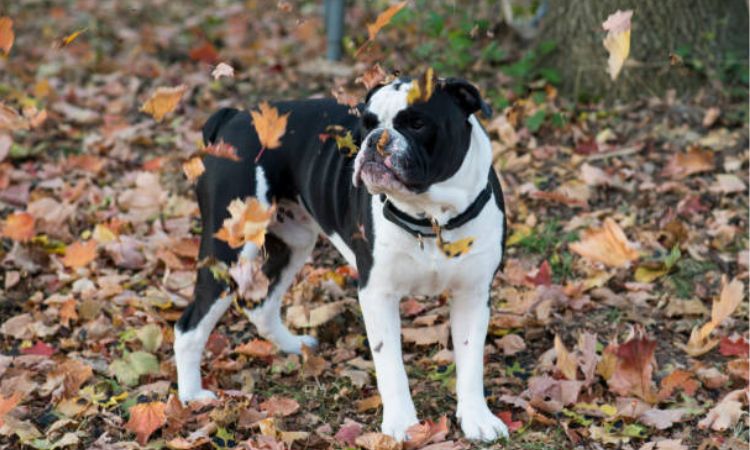
Alapaha Blue Blood Bulldog Temperament and Personality
Loyalty and Devotion
One of the defining traits of the Alapaha Blue Blood Bulldog is its fierce loyalty. These dogs are naturally protective of their families and homes, making them excellent watchdogs. They are alert and vigilant, always aware of their surroundings, yet their devotion to family members is unmatched. Unlike breeds that are aloof, Alapahas actively form strong bonds with their humans, showing affection through companionship, play, and attentiveness.
Protective Instincts
Alapahas were historically bred as working dogs, guarding plantations, herding livestock, and catching semi-wild hogs. Their protective instincts remain strong today. While this makes them excellent guardians, it also means they need experienced, confident owners who can guide and channel these instincts appropriately.
- Strangers: Alapahas may appear reserved or cautious around unfamiliar people
- Other animals: High prey drive can make them incompatible with small pets unless carefully socialized
- Children: Generally excellent with children when raised together and properly supervised
Proper socialization from a young age is essential to ensure that protective behavior does not become aggressive.
Intelligence and Trainability
Alapahas are highly intelligent and alert, thriving when given tasks or challenges. They learn quickly but can be independent-minded, so consistent, positive reinforcement training is critical. Early obedience and socialization help them channel their energy productively, reducing the likelihood of stubborn or dominating behavior.
- Work-oriented: They excel in structured activities such as agility, obedience, or job-based tasks
- Problem-solvers: Alapahas enjoy mental stimulation alongside physical activity
- Self-assured: Confident dogs that may assert themselves if not properly guided
Energy Levels and Exercise Needs
This breed has high energy and stamina, making daily physical activity crucial for their well-being. Without sufficient exercise, Alapahas may become bored, which can lead to destructive or unruly behavior.
- Daily walks and playtime are essential
- Fenced yard or supervised outdoor space allows them to expend energy safely
- Interactive play or task-based training channels their drive and intelligence
While active, Alapahas also value downtime. They appreciate a quiet, comfortable space where they can relax and recharge after a day of activity.
Personality Traits
The Alapaha Blue Blood Bulldog’s personality is a unique mix of strength, loyalty, and warmth. Key traits include:
- Assertive: Confident and self-assured
- Loyal: Forms deep bonds with family members
- Protective: Naturally vigilant, making excellent guardians
- Playful: Can be goofy and affectionate with trusted people
- Independent-minded: Requires firm, consistent training
- Work-oriented: Thrives when given a role or task
They are not the right breed for first-time dog owners, apartment living without sufficient exercise, or homes with small animals due to their size and instincts.
Early Socialization is Key
Because of their assertive nature, early socialization is essential. Exposing puppies to different people, environments, and animals helps them become well-adjusted adults. Without proper guidance, an Alapaha may develop fear or aggression toward strangers or unfamiliar animals.
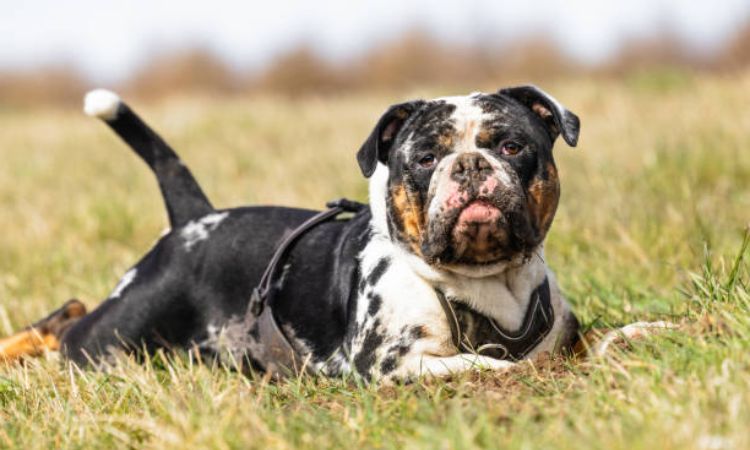
Alapaha Blue Blood Bulldog Care and Health
Exercise Requirements
Alapahas are athletic and energetic dogs that require at least 60 minutes of vigorous daily activity. This can include:
- Brisk walks or jogs
- Supervised play sessions in a secure yard
- Structured activities or tasks to engage their intelligence and work ethic
These dogs thrive when given a “job” or task, such as fetch, agility, or herding-type exercises, which help channel their energy productively. Without sufficient physical activity, they can become bored or exhibit undesirable behaviors.
Training and Socialization
Training
Alapahas are highly intelligent and trainable, but they can also be stubborn and self-assured. They respond best to:
- A firm, consistent, and patient owner
- Positive reinforcement techniques such as treats, praise, and structured routines
- Early obedience training to establish boundaries and encourage good behavior
Daily training sessions are recommended, particularly during the puppy stage, to help them become well-mannered adults.
Socialization
Socialization is crucial for Alapahas. Puppies should be exposed to:
- Different people and family members
- Various environments and noises
- Other dogs and, if possible, pets of other species
Proper socialization ensures that the dog grows up confident, well-adjusted, and able to interact safely with strangers, children, and other animals.
Grooming Needs
The Alapaha has a short, stiff coat, making grooming relatively low-maintenance:
- Brushing: Weekly brushing to remove loose hair and manage seasonal shedding
- Nails: Regular trims to prevent overgrowth and discomfort
- Ears: Weekly inspection and cleaning to prevent wax buildup or infection
- Dental Care: Frequent brushing to maintain oral health
Unlike some other bulldog breeds, Alapahas are less prone to drooling, thanks to their “dry mouth” anatomy. Bathing is only occasionally necessary, usually when dirt or skin issues occur.
Health and Lifespan
Alapahas are generally healthy dogs with a lifespan of 12–15 years, which is longer than many other bulldog breeds. However, there are some health concerns to be aware of:
- Hip and elbow dysplasia: Can cause lameness and arthritis; early detection is important
- Eye issues: Such as cherry eye, entropion, or other inherited conditions
- Deafness: Particularly in dogs with high amounts of white on the head
- Skin allergies: May occur due to food, environmental triggers, or sensitivities
Choosing a reputable breeder who screens for genetic conditions and maintains healthy breeding stock is key. Regular veterinary check-ups and preventive care can help manage and reduce the risk of these conditions.
Alapaha Blue Blood Bulldog Price and Finding a Puppy
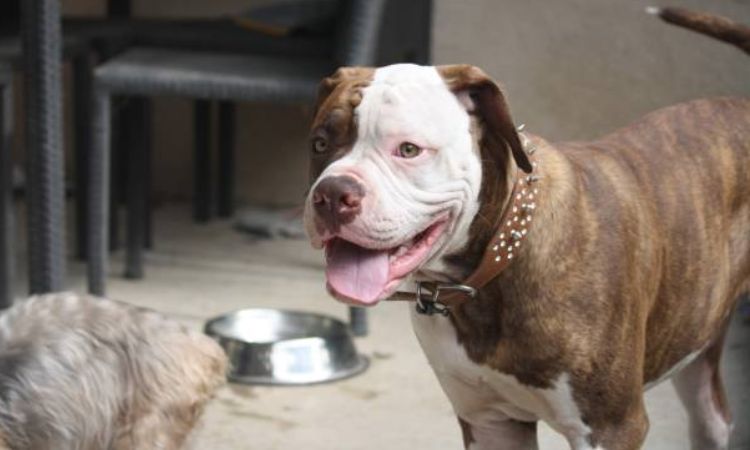
Cost of an Alapaha Blue Blood Bulldog Puppy (Purchase Price)
The Alapaha Blue Blood Bulldog is a rare and sought-after breed, and prices reflect its limited availability and breeding quality. On average, a puppy can range anywhere from $2,000 to $5,000 USD, though top-quality puppies from well-known bloodlines with strong working heritage may command even higher prices. The cost depends heavily on factors such as breeder reputation, lineage, registration status, and location. Because the breed is so rare, prospective owners should be prepared to invest both time and money to find a responsible breeder.
What to Look for in a Reputable Breeder
Finding a trustworthy breeder is crucial when purchasing an Alapaha Blue Blood Bulldog, as the breed has specific health and temperament considerations. Key factors include:
- Health Clearances: Ensure both parents have proper genetic testing and health certifications. This includes OFA or PennHIP evaluations for hips and elbows, as well as eye certifications. Responsible breeders will provide documentation.
- Temperament and Working Lines: Look for breeders who emphasize stable, social, and trainable temperaments, often maintaining the breed’s working heritage. Puppies from well-selected working lines are typically healthier, more balanced, and easier to train.
- Transparency and References: Reputable breeders should be open to answering all questions, provide pedigree information, and offer references from previous buyers. They often require that new owners demonstrate experience with large, confident dogs and may offer guidance on training and socialization.
Rescue and Adoption Options
For those interested in providing a home to an existing Alapaha Blue Blood Bulldog, there are rescue and adoption opportunities, though they are limited due to the breed’s rarity. Options include:
- Breed-Specific Rescues: Some organizations specialize in Alapaha Blue Blood Bulldogs or rare bulldog breeds. These rescues may have adult dogs, retired working dogs, or occasionally puppies.
- General Bulldog Rescues: Broader bulldog rescue organizations may occasionally take in Alapahas, particularly those needing rehoming due to owner circumstances.
- Adoption Considerations: Adopted Alapahas may require additional socialization and training, especially if they were previously used as working or guard dogs. Prospective adopters should be prepared for a high-energy, intelligent breed that thrives with structure, tasks, and consistent leadership.
Tip: Whether purchasing from a breeder or adopting, always research the dog’s lineage, health history, and temperament to ensure a good match for your family and lifestyle. Given the Alapaha Blue Blood Bulldog’s size, strength, and protective nature, this breed is best suited to experienced dog owners who can provide time, training, and a structured environment.






